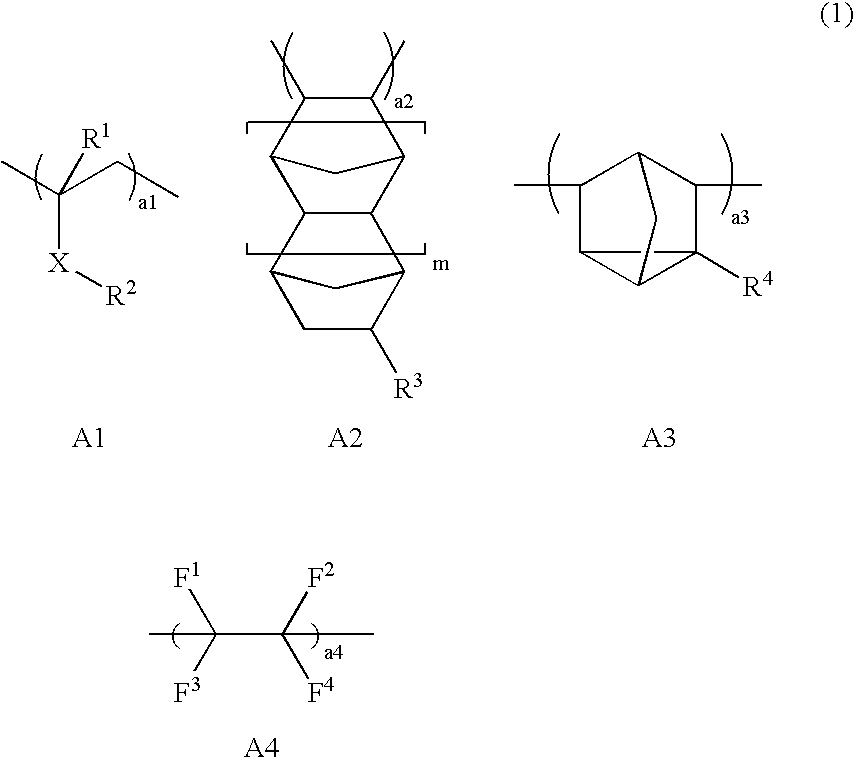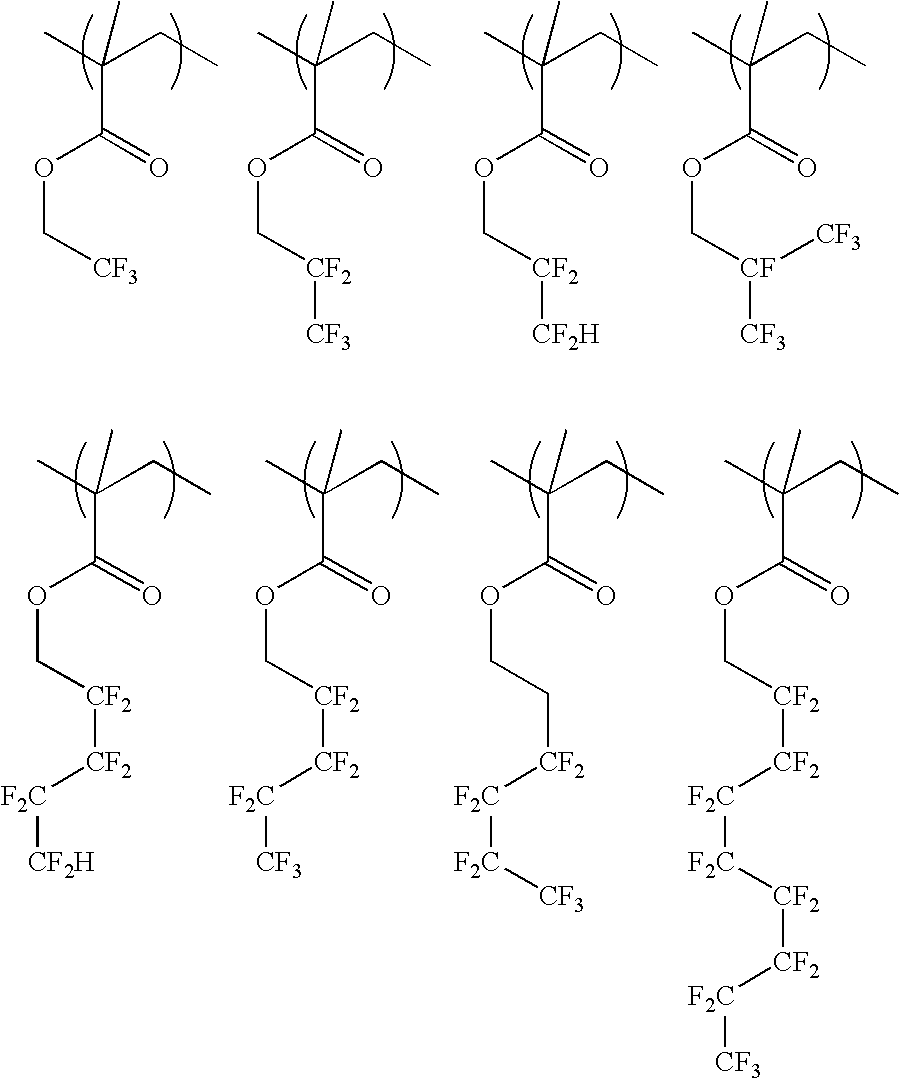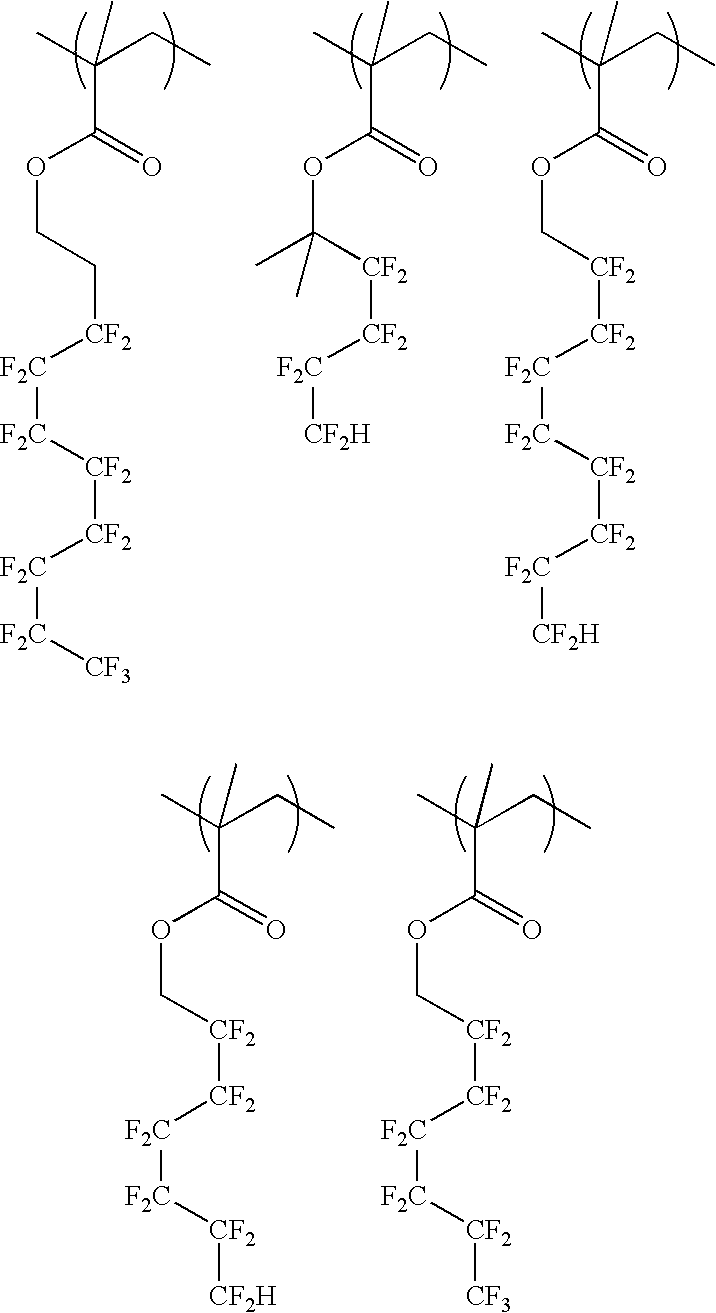Resist protective film material and pattern formation method
a protective film and pattern formation technology, applied in the direction of photosensitive materials, photomechanical equipment, instruments, etc., can solve the problems of not being suited to the preparation of antireflective films, the essential limit of resolution of light exposure currently on widespread use in the art, and the use of fluorocarbons now becomes a problem. , to achieve the effect of excellent process adaptability
- Summary
- Abstract
- Description
- Claims
- Application Information
AI Technical Summary
Benefits of technology
Problems solved by technology
Method used
Image
Examples
synthesis example 1
[0056] A 200-ml flask was charged with 38.7 g of Monomer 1, 6.7 g of Monomer 2 and 40 g of methanol as a solvent. This reaction vessel was cooled to −70° C. in a nitrogen atmosphere, followed by three time repetitions of vacuum deaeration and nitrogen flow. After heating to room temperature, 3 g of 2,2′-azobis(2,4-dimethylvaleronitrile) was added as a polymerization initiator. After heating to 65° C., the reaction was effected for 25 hours. The reaction solution was poured into hexane for crystallization, by which the resin was isolated. The composition and molecular weight of the resulting resin were confirmed by 1H-NMR and GPC, respectively. The resin was designated as Example Polymer 1.
synthesis example 2
[0057] A 200-ml flask was charged with 38.7 g of Monomer 1, 12.3 g of Monomer 3 and 40 g of methanol as a solvent. This reaction vessel was cooled to −70° C. in a nitrogen atmosphere, followed by three time repetitions of vacuum deaeration and nitrogen flow. After heating to room temperature, 3 g of 2,2′-azobis(2,4-dimethylvaleronitrile) was added as a polymerization initiator. After heating to 65° C., the reaction was effected for 25 hours. The reaction solution was poured into hexane for crystallization, by which the resin was isolated. The composition and molecular weight of the resulting resin were confirmed by 1H-NMR and GPC, respectively. The resin was designated as Example Polymer 2.
synthesis example 3
[0058] A 200-ml flask was charged with 30.3 g of Monomer 2, 7.7 g of Monomer 8 and 40 g of methanol as a solvent. This reaction vessel was cooled to −70° C. in a nitrogen atmosphere, followed by three time repetitions of vacuum deaeration and nitrogen flow. After heating to room temperature, 3 g of 2,2′-azobis(2,4-dimethylvaleronitrile) was added as a polymerization initiator. After heating to 65° C., the reaction was effected for 25 hours. The reaction solution was poured into hexane for crystallization by which the resin was isolated. The composition and molecular weight of the resulting resin were confirmed by 1H-NMR and GPC, respectively. The resin was designated as Example Polymer 3.
PUM
| Property | Measurement | Unit |
|---|---|---|
| domain size | aaaaa | aaaaa |
| exposure wavelength | aaaaa | aaaaa |
| wavelength | aaaaa | aaaaa |
Abstract
Description
Claims
Application Information
 Login to View More
Login to View More - R&D
- Intellectual Property
- Life Sciences
- Materials
- Tech Scout
- Unparalleled Data Quality
- Higher Quality Content
- 60% Fewer Hallucinations
Browse by: Latest US Patents, China's latest patents, Technical Efficacy Thesaurus, Application Domain, Technology Topic, Popular Technical Reports.
© 2025 PatSnap. All rights reserved.Legal|Privacy policy|Modern Slavery Act Transparency Statement|Sitemap|About US| Contact US: help@patsnap.com



